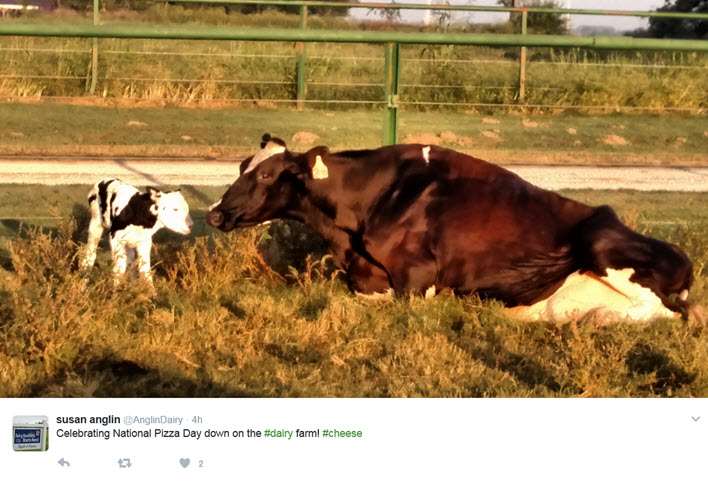Which states produce the key ingredients needed?
By Diego Flammini
Assistant Editor, North American Content
Farms.com
Across many social media platforms, National Pizza Day is being celebrated on Thurs., Feb. 9.
Photos of square and triangle-shaped slices oozing with different cheeses and toppings are flooding timelines.
But everyone knows that, without farmers, National Pizza Day doesn’t exist.
And if you were to travel the United States looking for the top states to visit for key ingredients, where would you go?

Photo: Susan Anglin/Twitter
Wheat
The pizza’s dough and crust is the foundation the toppings sit upon. It needs to be strong enough to hold the toppings but soft enough to allow for a positive pizza experience.
If you are looking for wheat, you would go to North Dakota.
According to the USDA’s 2015 Crop Production Summary, North Dakota produced more than 370 billion bushels of wheat – the most of any state.
Tomatoes
Tomato sauce is an important part of any pizza. And if you are looking for where to purchase tomatoes, your journey would take you to Florida.
The USDA’s 2015 Vegetable Summary says Florida produced $453,102,000 worth of fresh market tomatoes in 2015.
Cheese
Pizzas can be topped with many different cheeses but mozzarella is what’s typically chosen. The search for mozzarella cheese would take you to California.
According to the USDA’s 2015 Dairy Products Summary, California produced 1,426,822,000 pounds of mozzarella cheese in 2015.
California also tops the U.S. in bell pepper, onion and olive production.

Pepperoni
A staple of many pizzas, pepperoni is usually made from pork. The search for pepperoni would take you to Iowa.
According to the National Pork Board, Iowa produced $6,584,559,000 worth of pork in 2015.